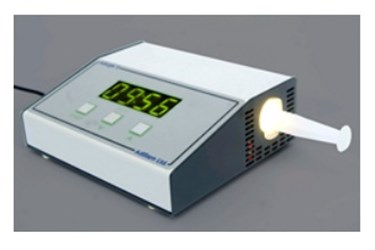Further Evidence That The Photoactivation Of PRP (PAPRP) Is A Novel And Effective Treatment For Osteoarthritis And Knee Pain

A 40 Patient Clinical Trial using AdiStem PRP PhotoActivation is being planned in Australia following two initial case studies published in the “British Medical Journal”. One was on a 50 year old woman in Melbourne with left knee osteoarthritis and the other on a 38 year old man with traumatic chondral lesion of the left knee.
Melbourne, Australia (PRWEB) - A 40 Patient Clinical Trial using AdiStem PRP PhotoActivation is being planned in Australia following two initial case studies published in the “British Medical Journal”. One was on a 50 year old woman in Melbourne with left knee osteoarthritis and the other on a 38 year old man with traumatic chondral lesion of the left knee.
The 50 year old woman had progressive and symptomatic left knee osteoarthritis and recently received treatment where her knee was injected with PhotoActivated Platelet Rich Plasma (PAPRP). Following treatment her Numerical Pain Rating Scale (NPRS) improved at Week 1 suggesting an immediate anti-inflammatory and analgesic benefit of PAPRP. At 18 weeks following the initial PAPRP injection, the patient reported a perceived improvement of 80% in both pain and function as measured by NPRS and WOMAC. No complications were noted.
The use of PRP has been expanding rapidly. Platelets contain an abundance of growth factors, cytokines and bioactive molecules crucial to hard and soft tissue healing and leading to a significant reduction in pain. It is now recognized that the additional use of low intensity light at specific frequencies increases both the release of anti-inflammatory agents and beta endorphins -- the bodies natural pain reliever -- which contributes to the patient’s comfort.
During the procedure, the patients’ autologous blood is centrifuged for 10 minutes. This yields plasma which is then withdrawn into a sterile tube and exposed to photoactivation for 10 minutes using the AdiLight-2 device from AdiStem Ltd, Hong Kong. The resulting PAPRP is then injected into the knee. The process should be repeated 3 times – 1 week apart. (BMJ Case Reports Published online 26 March 2013; doi: 10.1136/bcr-2012-007463)
An earlier study by the same doctor (Dr. Julien Freitag), which was also published in the “British Medical Journal”, used PAPRP on a healthy 38 year old man with traumatic chondral lesion of the left knee following a basketball injury. The patient experienced functional improvement within 2 weeks of commencing treatment and a perceived 100% improvement at Week 15. No complications were noted. (BMJ Case Reports Published Online: 17 December 2012; doi: 10.1136/bcr-2012-006858)
The forthcoming 40 patient clinical trial using PAPRP is now being undertaken by Dr. Julien Freitag on patients with knee osteoarthritis and knee joint pain. These conditions are normally difficult to treat - and major causes of disability and chronic pain amongst millions of people.
More information from http://www.adistem.com.
Source: PRWeb
View original release here: http://www.prweb.com/releases/2013/7/prweb10940829.htm
